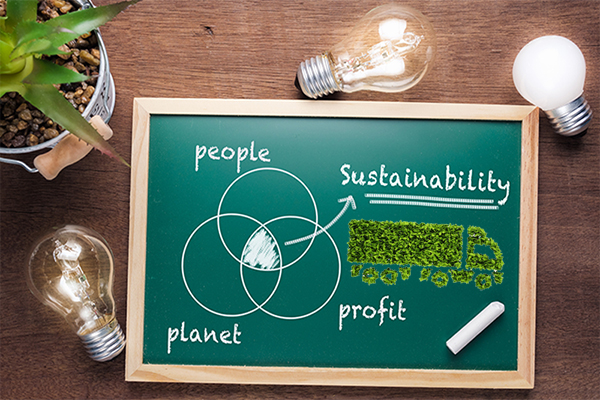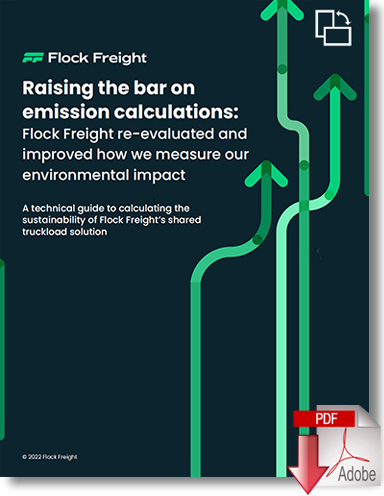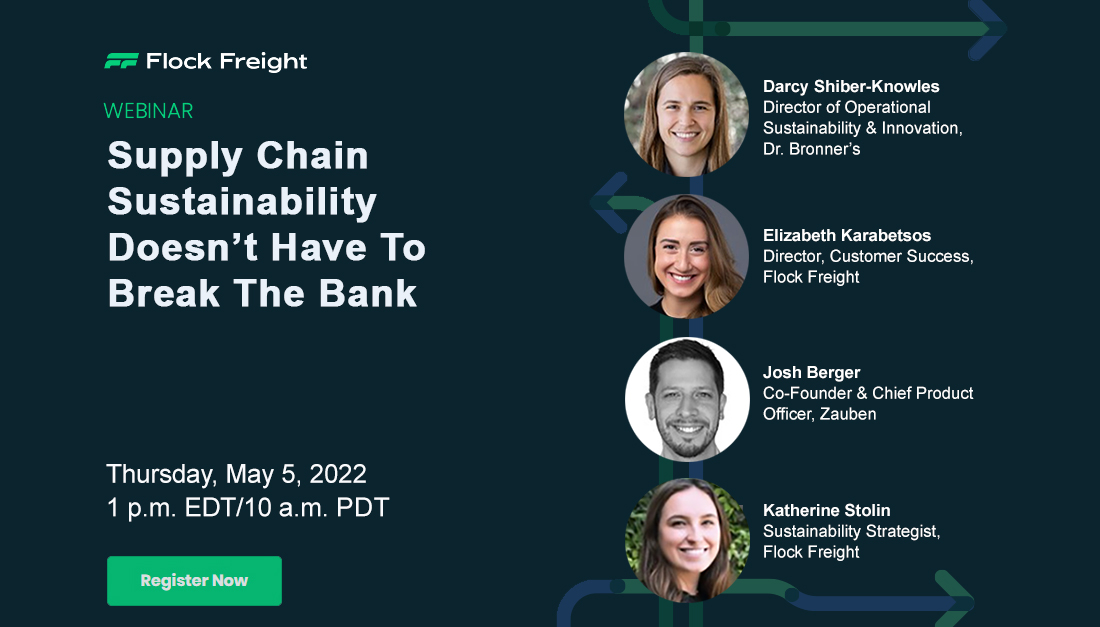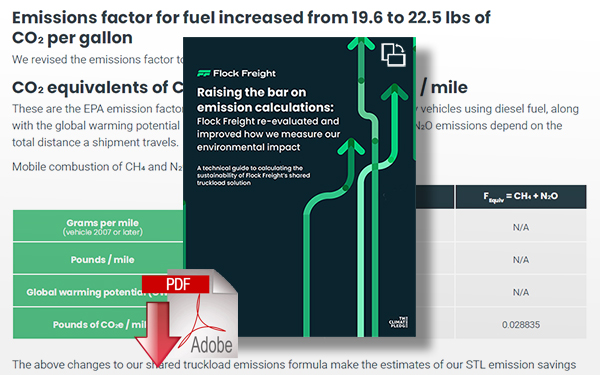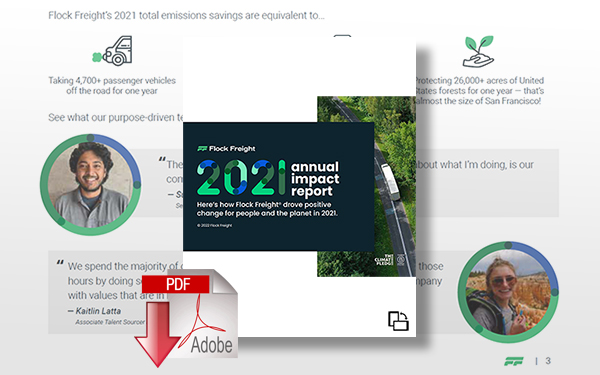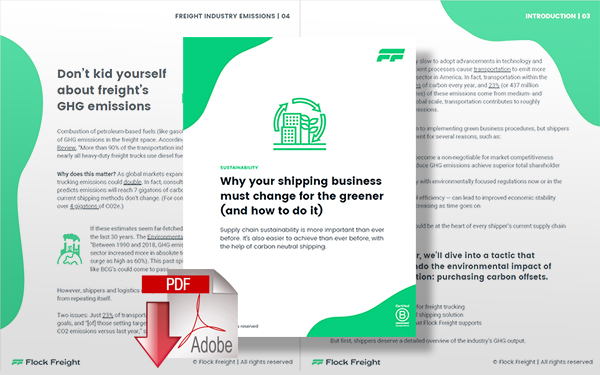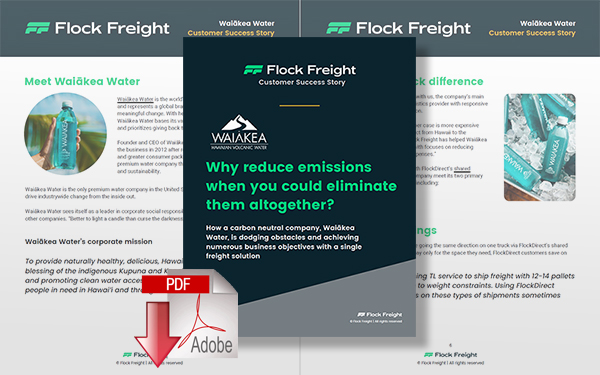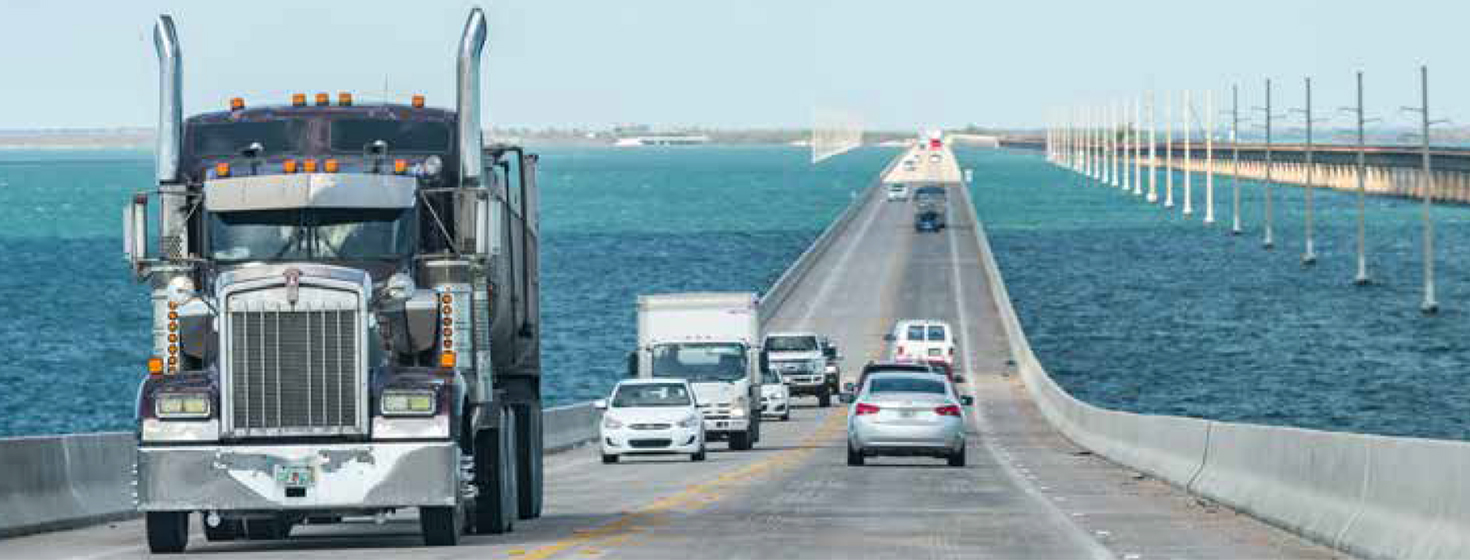5 Ways for Driving Sustainability within Your Organization

When you’re ready to up your organization’s sustainability efforts, start by challenging the common assumption that industry and sustainability don’t mix - here are 5 ways to build sustainability into your corporate value system.
How Sustainable Businesses Create Green Company Cultures
Is your company ready to reduce its environmental impact, but not sure where to start? Whether you’re a large company, small business, or startup, embarking on the quest for sustainability can feel overwhelming, especially when it means implementing new practices.
Breathe deep, pace yourself, and take some pointers from a company that’s on a similar journey. When you’re ready to up your organization’s sustainability efforts, start by challenging the common assumption that industry and sustainability don’t mix.
Book carbon neutral shipping today; help your business move on a greener path tomorrow - Get Started!
Admittedly, these two ideas may seem at odds in action, but thousands of companies are already proving that notion wrong. Your organization must believe in the value of driving positive environmental results to have a chance of achieving corporate sustainability.
The road to a greener business? Laying a foundation of sustainability in your work culture. Here are the best ways to build sustainability into your corporate value system.
1. Identify As a “Sustainable Business,” Then Operate As One
Set the stage for sustainable business practices by ingraining environmental responsibility in your corporate mindset. The first step: securing buy-in from key stakeholders, starting with senior management. Sustainability initiatives that come from the top down are much more successful and easier to implement than efforts without top-of-the-ladder support, which is why business leaders should be on the same sustainability page before they move on to the next step.
If the initial meeting turns into a month-long discussion, don’t be discouraged; depending on your organization, integrating sustainability into the business model might require a 180-degree attitude shift or spark further environmental, social, and governance (ESG) conversation. Rest assured: Corporate sustainability talk, no matter how long it takes, is essential for consensus.
Once senior leadership agrees to go green, infuse sustainability into your corporate mission. Stamping positive environmental impact into your corporate code will pave the way for your next moves: crafting a planet-friendly business strategy and looking through the lens of sustainability as you make company decisions.
Use sustainability as a guide to help you thread environmental responsibility through every aspect of your organization and adjust collective behavior.
2. Establish an Environmental Impact Team
Developing a sustainability strategy and putting it to work are no easy feats, and training your entire staff to recognize the planet as a stakeholder will take the power of multiple people. Your next move? Setting up an internal committee to manage sustainability initiatives.
This environmental task force can handle a variety of projects, including:
- Hosting community cleanups
- Circulating information about upcoming sustainability events
- Rewarding employees who participate in sustainability efforts
- Replacing shared plastic kitchenware with reusable utensils and cups
- Encouraging employees to bring reusable drinkware
- Providing education about climate change, renewable energy, fossil fuels, and conservation of natural resources
- Recommending a transition to paperless operations
- Spearheading eco-friendly procurement processes
- Slashing water usage by fixing dripping taps and plumbing leaks
- Rallying support for external sustainability initiatives, like carbon offset programs
- Suggesting tweaks to the business model for enhanced sustainability
- Leading waste diversion efforts via recycling and composting programs
- Kicking off discussions about corporate carbon neutrality
These opening conversations may snowball into long-term talks, especially for projects that would affect the overall business strategy and/or call for sizable investment. Embrace further discussion; it’s a sign your organization is taking corporate sustainability seriously.
To lower your company’s carbon footprint and dependence on raw materials, your environmental impact team might also assess the sustainability of your office buildings and identify areas for improvement. Renovations like the installation of solar panels, charging stations for electric vehicles, and drought-tolerant landscaping involve considerable coordination, time, and capital, but other upgrades - including the ideas in the following list - are easier, faster, and cheaper to implement:
- Designating carpool parking spots
- Construct secure bike racks
- Updating lighting with LED bulbs and motion sensors
- Sourcing sustainable office furniture
- Replacing paper towels with air dryers in bathrooms and kitchens
- Installing low-flow toilets and faucet aerators in bathrooms
If a large remodel is in the works, don’t send reusable material to landfills. Donate used supplies to organizations like Habitat for Humanity, which funds the construction of low-income housing by selling everything from used appliances to lumber. This type of donation makes a positive impact and allows your business to claim a charitable tax deduction.
With your environmental impact team and senior management working together, your organization will be one step closer to corporate sustainability.
3. Define Corporate Sustainability Goals
Map out your company’s environmental objectives for the next few years with your impact and leadership teams. As you think about your desired outcomes, consider all stakeholders - customers, suppliers, employees, the local community, and the environment. A few tips:
- Pinpoint business processes that are easy to change
- Prioritize low-cost, high-impact initiatives
- Don’t shy away from lofty endeavors that you can break into manageable phases (like going carbon neutral or zero waste)
If you get stuck, dig deeper to uncover the ways your organization can make a difference. A handy tool might be a materiality analysis: a methodology that helps companies identify and estimate possible ESG changes. A materiality analysis asks questions like:
- What does the company care about?
- What does the team see as the business’ contributions to society?
- Which challenges does the organization face?
- What value does the company provide?
The answers will show you the problems your organization can solve.
For broader insights, ask external partners to answer these questions about your company. Together, the internal and external findings will create a framework for sustainable business practices.
4. Form Your Sustainability Strategy, Then Implement It
You’ve secured buy-in from upper management, established an environmental impact team, and slated well-developed sustainability objectives. Now what?
Devise a sustainability strategy with tactics to measure your progress. Tracking performance metrics like time, spend, audits and certifications will help you understand whether or not your sustainability efforts are paying off.
Think about the following indicators as you build your strategy:
- Materials
- Energy
- Water
- Greenhouse gas emissions
- Waste
- Products and services
- Compliance
- Transportation
Once your sustainability strategy is set, hold your employees accountable for completing action items and consider bringing on an outside consultant. Collaboration with a consulting firm won’t just keep your team members on track, it will also strengthen your ability to measure your business’ climate impact.
To determine your company’s current impact, experienced consultants will ask questions like:
- How does your organization account for durability, repairability, and recyclability?
- How does your business boost efficiency and eliminate waste across production plants and distribution centers?
With accountability and measurement systems in place, you have almost all the momentum you need to bring your corporate sustainability strategy to life.
5. Partner with Sustainable Businesses (like Flock Freight)
Our last tip: Choose partners with green business models and high ESG standards. (Work this idea into your sustainability strategy if you haven’t already!)
Picking partners with similar values is your final stop on the road to sustainability. The company supply chain is a viable starting point.
A sustainability-focused logistics partner, like Flock Freight®, will use the least possible amount of natural resources to transport your order. Take our carbon neutral FlockDirect™️ shipping service, for example.
All FlockDirect freight moves via sustainable shared truckload service, which reduces each shipment’s carbon emissions by up to 40%. To provide carbon neutral shipping, we supplement the emissions savings of FlockDirect shipments with a carbon offset program, in partnership with Carbonfund.org.
FlockDirect is one of many new, technology-backed solutions in the freight space. Innovative use of technology (in addition to planet-friendly corporate values) is a clue that the logistics partner you’re vetting is invested in environmental and social impact. Evaluate potential shipping companies for green freight transportation with questions like:
- Do you educate your employees on supply chain sustainability?
- Do you train your truck drivers in efficiency techniques?
- What’s the overall fuel efficiency of your fleet?
Asking these questions in your vetting process and adding your expectations for environmental performance to your contract criteria take relatively little effort and go a long way to forging a sustainable value chain.
To summarize, freight shipping has become one of the best areas to focus on as you expand corporate sustainability because of new solutions (like carbon-neutral FlockDirect):
- Save fuel via efficient transit and optimized routes
- Erase the environmental risks of remanufacturing (then reshipping) damaged goods
- Reverse the impact of tailpipe emissions with carbon offsets
- Preserve energy and raw materials
Connect with a like-minded logistics business to find out how you can lower your supply chain’s carbon footprint today.
Don’t Just Talk Like a Sustainable Business; Be One
With sustainability at the heart of your business model, stakeholders will have the context they need to practice environmental responsibility every day. As a result, green ideas will come to life and generate positive impacts.
In conclusion, implement a sustainability game plan within your organization by:
- Deciding your company will go green
- Establishing an internal sustainability committee
- Thinking through sustainability goals
- Developing and implementing a sustainability strategy
- Choosing environmentally-focused partners
Before you know it, you’ll have a business that reflects your ESG values.
Upcoming Related Webinar
Supply Chain Sustainability Doesn’t Have To Break The Bank
Time: Thursday, May 5, 2022 | 1 p.m. EDT/10 a.m. PDT
With growing demand from customers and partners, addressing your company’s environmental impact today is absolutely essential if you want to remain competitive and relevant tomorrow. Your supply chain is a great place to start.
Traditional freight shipping is notoriously inefficient and wasteful, which means there’s a significant opportunity for improvement in this part of your business. The best part? Reducing your supply chain’s environmental impact doesn’t have to be costly.
Join Flock Freight’s Director of Customer Success Elizabeth Karabetsos and Sustainability Strategist Katherine Stolin, along with Dr. Bronner’s Director of Operational Sustainability & Innovation Darcy Shiber-Knowles and Zauben’s Co-Founder & Chief Product Officer Joshua Berger, as they discuss 2022 corporate social responsibility (CSR) trends and how to give your supply chain a sustainable overhaul while keeping costs in check.
Attend this webinar to:
- Gain insights into macro CSR trends that today’s businesses are experiencing
- Learn what sustainability leaders are doing to remove barriers to net-zero carbon emissions
- Discover business tactics that improve resource efficiency, reduce costs and minimize environmental output.
Related Resources
Raising the Bar on Sustainability Reporting
This paper provides a technical guide to calculating the sustainability of Flock Freight’s shared truckload solution. Download Now!
Flock Freight 2021 Annual Impact Report
Here’s how Flock Freight® drove positive change for people and the planet in 2021. Download Now!
Why Your Business Must Change For the Greener
In this white paper, we’ll dive into a tactic that shippers can use to undo the environmental impact of freight transportation: purchasing carbon offsets. Download Now!
Why Reduce Emissions When You Could Eliminate Them Altogether?
In this Customer Success Story, we describe how a carbon-neutral company, Waiākea Water, is dodging obstacles and achieving numerous business objectives with a single freight solution. Download Now!
More Resources from Flock Freight
Related Article: Study Finds Traditional Freight Shipping Inefficient & Costly According to Shippers across the US
Article Topics
Flock Freight News & Resources
Wasted Space and Damaged Freight Overshadowed Favorable Conditions for Businesses in 2022 Top Issues Affecting Shippers Last Year 6 Lessons from CSCMP EDGE 2022 to Improve Shipping Freight & Supply Chain Inefficiencies Inefficiency - Not Just the Labor Shortage - Is Breaking Supply Chains Today’s Post-Pandemic Parcel Delivery Marketplace A Shipper’s Guide to Navigating Post-Pandemic 2022 Holiday Freight Shared Truckload Freight Increases Carrier Revenue by 20% More Flock FreightLatest in Supply Chain
TIm Cook Says Apple Plans to Increase Investments in Vietnam Amazon Logistics’ Growth Shakes Up Shipping Industry in 2023 Spotlight Startup: Cart.com is Reimagining Logistics Walmart and Swisslog Expand Partnership with New Texas Facility Nissan Channels Tesla With Its Latest Manufacturing Process Taking Stock of Today’s Robotics Market and What the Future Holds U.S. Manufacturing Gains Momentum After Another Strong Month More Supply Chain